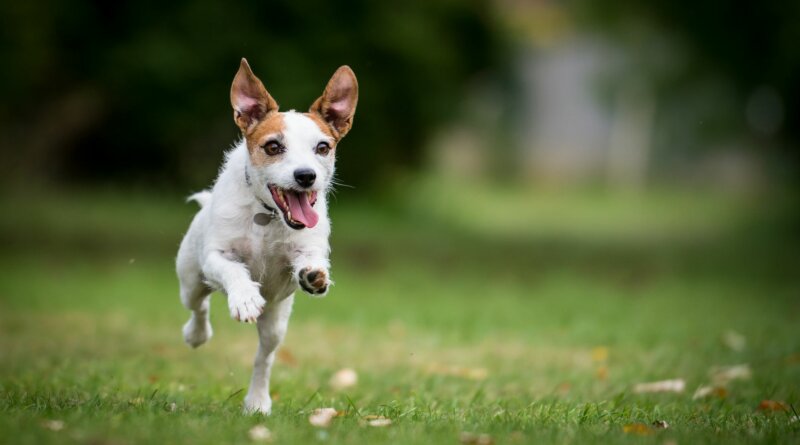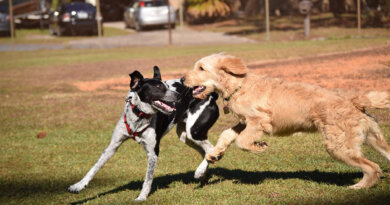What Are Signs of Happiness in Dogs?
Dogs have the emotional capacity of a 2- to 3-year-old child. They can feel emotions (happy, sad, angry, fearful), but they can’t express them in words. It’s up to the adults around them to interpret their actions and body language.
Signs of happiness vary from dog to dog – but here are seven behaviors most dogs exhibit when they are happy:
- Tail relaxed or body wagging, relaxed ears, relaxed body: A stiff body or tail with ears facing back means an unsure dog. It could signal aggression or worry. A wagging tail and relaxed ears means interest and comfort. A tail that’s low and wagging is more likely an indication the dog may be stressed.
- Happy, relaxed face: Dogs “smile,” usually with their mouth open and showing some teeth. Snarling or curling back the lips means aggression. A hard stare is a clear indication the dog is not happy.
- Happy dance: It’s usually from side to side, and they usually do it before a favorite activity, like eating, walking, hunting, or playing.
- Play bow (bottom up, head and chest down): It almost always means they want to play, and it often precedes happy zoomies.
- Happy barks: Usually shorter and higher pitched than regular barks.
- Eating: A happy dog eats well because he’s not worried.
- Good behavior: A happy dog usually doesn’t misbehave by chewing things or having accidents in the house.
Other signs of happiness can include being excited about activities and friendly toward other dogs and people. Again, though, many factors can cause a dog to be unfriendly, too. It’s a vital part of having a dog, so take the time to watch your dog and learn to understand his tail and other body language, so you can react to him appropriately.





